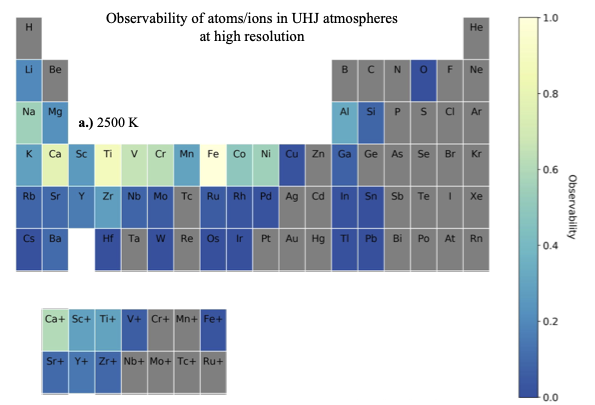Exoplanet Atmospheres
My main focus of research is the characterization of exoplanet atmospheres using high resolution spectroscopy. High resolution spectroscopy is a powerful tool for analyzing atmospheres due to its ability to resolve individual lines of atoms and molecules that are invisible (e.g., Fe, Ti, V) or difficult to unambiguously detect (e.g., FeH, TiO, VO) at low-spectral resolution. Below is a figure from our recent paper showing all the atoms and ions that are visible at optical wavelengths with high resolution spectroscopy. 
In addition to detecting an array of chemical species, high spectral resolution also allows us to resolve small velocity shifts from winds and dynamics present in exoplanet atmospheres. Observations from high resolution spectrographs can then be compared to global circulation models to learn about weather in exoplanet atmospheres.
Check out some recent papers that I was involved in on these topics:
1. An Atomic Spectral Survey of WASP-76b: Resolving Chemical Gradients and Asymmetries. Kesseli, et al. (2022, AJ)
2. Confirmation of Asymmetric Iron Absorption in WASP-76b with HARPS. Kesseli & Snellen (2021, AJ)
3. A search for FeH in Hot-Jupiter Atmosphere with High-dispersion Spectroscopy. Kesseli et al. (2020, AJ)
4. Detection of OH in the ultra-hot Jupiter WASP-76b. Landman et al. incl. Kesseli (2021, A&A)
5. Characterizing the Protolunar Disk of the Accreting Companion GQ Lupi B. Stolker, Haffert, Kesseli, et al. (2021, AJ)